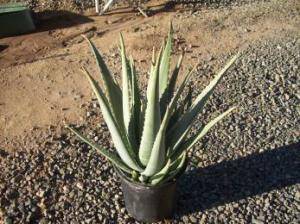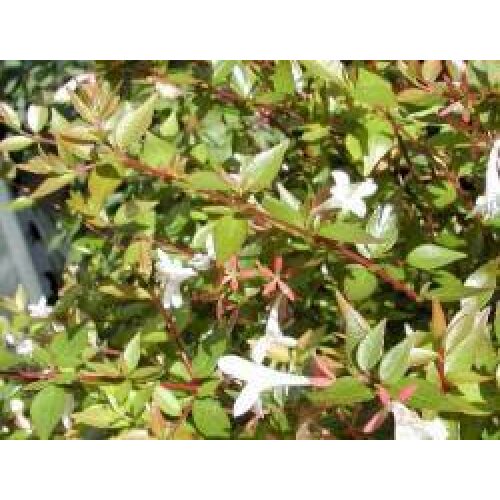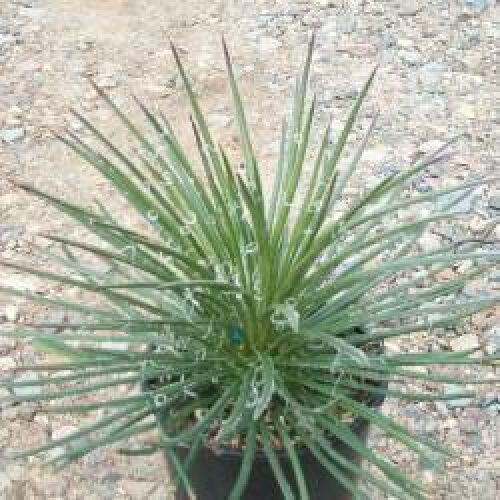Aloe vera
Aloe vera
| Evergreen-Deciduous | Evergreen |
|---|---|
| Overall Mature Size | Small |
| Mature Height & Spread | 1-2' x 1-2' |
| Exposure | Full sun |
| Water | Low water |
| Flower Color | Yellow |
| Bloom Time | Spring, Summer |
| Special Features | Attracts Birds, Butterflies, Coastal Conditions, Deer Resistant, Low Water Use |
| Container Sizes | #1, #5 |
| Natural Growth Habit | Clumping |
| Sunset Garden Zones | 8, 9, 12-24, H1, H2 |
| Minimum USDA Hardiness Zone | 9-11 |
| Plant Type | Succulent |
Aloe vera is one of about 250 species of Aloes. The Aloes are members of the Lily family (Liliaceae) and therefore are relatives of such common plants as tulips Easter lilies and asparagus. Aloe vera is believed to be native to the Mediterranean.
Aloe vera is a leafy succulent that grows in a rosette fashion in hot well-drained soils. The leaves are spotted when young but take on a uniform light green color with age. They can reach 2 feet in length and are edged with soft spines.
Interest in the sap of this species extends back over 2000 years. It is bitter slimy and can be collected as an exudate from cut leaves or squeezed from the pulp of leaves. Leaves from all aloes have long been credited with healing properties but the especially succulent Aloe vera is valued most.
In the past leaves were sliced and laid on the skin to relieve itching and to heal burns. Today it is claimed to work effectively on sunburns minor burns wrinkles insect bites skin irritations cuts and scratches. A “tea” made from the dried sap of this species is said to make a good wash for wounds and the eyes.
Aloe vera makes a sturdy long-lived houseplant as long as it is given plenty of sunlight and is not over-watered. Many home gardeners grow it on a windowsill so the sap is readily available.
Prefers sun to partial shade moderate to little water when established tender to frost.




